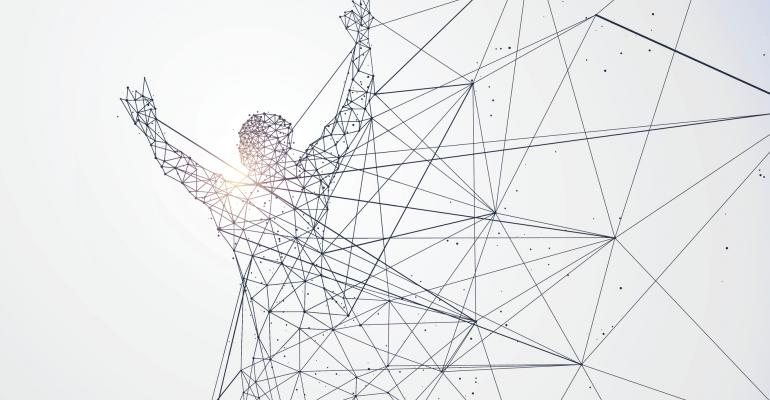The tagline of Meeting Professionals International’s World Education Congress, unfolding June 19 to 22 in Las Vegas, is “Stop planning meetings. Start designing experiences.” One of the executive-level tracks, “The 4D Conference Experience,” aims to help meeting professionals think more about the strategic design of their events and learn how to foster four deep experiences at their meetings: deep learning, deep play, deep reflection, and deep connections.
“You probably remember a time in your life when you viewed a 3D movie with special glasses. The images looked like they popped out of the screen,” says Jeff Hurt, DES, executive vice president, education and engagement, Velvet Chainsaw Consulting. Hurt, who designed the special track for MPI, with five sessions spanning three days, adds, “Your conference needs more than the gimmick of 3D glasses. It needs authentic 4D experiences.”
Kristi Casey Sanders, CMM, DES, HMCC, director of the MPI Academy, interviewed Hurt recently on Facebook Live about the background and meaning of 4D experiences, and what participants (both live and virtually) can expect from the MPI track. Hurt has designed each session using a station-rotation format, a highly participatory room set up that encourages engagement.
Sanders: The best live event experiences transform participants by engaging, educating, connecting, and provoking new thoughts, relationships, and behaviors. We consider what you’re doing to be a very cool experiment and a very special program for MPI WEC. Can you tell us where the concept of 4D conference experiences came from?
Hurt: So often in our conference settings we have gone in the opposite direction to micro experiences: 10 minutes of this, 30 minutes of that, and have neglected getting people more involved. We’re missing out on a cohesive element at conferences. We’ve crammed so much in and done away with space intervals where people have time to reflect.
The four Ds of design—or four elements that comprise the 4D experience—focus on creating transformative conferences. Otherwise, your experiences are just transactional.
Sanders: You’ve said before that best practices are becoming the norm, and therefore there is nothing special about them: They’ve become the standards, and anything that was best has been boiled down to averageness. In a time of uncertainty and disruption, how can we prepare to elevate or standout, to be focused on learning the next practices?
Hurt: We are getting good at creating wow experiences at conferences, but they’re not transformative. They’re brief cotton candy fluff. Celebrity appearances are fine if they help the audience connect with deeper thoughts that really stick. Right now we are informational and transactional in our conferences. We are delivering lots of information, but it’s not changing attitudes or skills. How do we create experiences that actually change peoples’ lives? How do we advance deep learning, help people to be better at their jobs? I’m not talking about shallow learning, which is just about how to get my CEs. Where do we build in time for deep reflection? How do we design, develop, and deliver…what do we do differently next time? Otherwise, we go back to best practices, and the status quo, and what everyone else is already doing.
Sanders: We want to ensure that your sessions are integrated, to make sure participants learn how 4D is applicable or absorbed. We’ve planned the overview in the first session, but if attendees are interested in other elements (deep learning, deep play, deep reflection, and deep connections), they have time for a deeper dive into each session over the three days.
It’s really an evocative design, which we’re looking at for our future meetings. We’re pushing participants to evolve the way they learn, to be more selective. So thank you for inspiring us. And for taking the science behind learning and embodying it in the conference.
Hurt: We are integrating the applications of neuroscience: How do you incorporate those four elements so that people walk out and go, ‘wow, that really made me think. I now remember and can apply it.’ Otherwise, you are wasting your attendees’ time and money.
And the reason not all the sessions are on one day is because we’re following the science and allowing the brain time to think, to process overnight. You’re thinking about it in your sleep without even realizing it. So you can go to the next session the next day and talk about it with others.
The deep connection piece is really interesting. You go to a conference and meet someone—I call it speed networking—and exchange business cards. You go on to the next and the next. That is totally transactional, not transformational. What we’re learning from people like Judith Glaser, CEO, Creating WE Institute is that if we have connections on a deeper level, if we share our dreams with one another, if we talk about the what ifs, then we bond and we have a deep connection for life. The brain never forgets that. That’s the kind of networking we need.
Sanders: If for any reason meeting professionals can’t attend WEC in person, we are bringing WEC to them. These sessions will be live streamed and we will be engaging throughout the sessions with the virtual audience.
Hurt: Correct. We’re not a spectator sport. We don’t want you just to observe. We want you to be participatory even though you’re remote. So we’ve designed the virtual portion to engage through text chat. We’ll ask you questions and ask you to do things and give us feedback, and we’ll incorporate that into the face-to-face experience.
The overview session for the 4D Conference Experience track will be Tuesday, June 20 at 11:30 a.m., followed by a session that day at 3:15 p.m. on deep learning. On Wednesday, deep connections and deep play will be covered at 11:45 a.m. 3:15 p.m., respectively. Thursday, the final session of the track on deep reflection is at 9 a.m. For more information about MPI’s WEC, visit http://mpiweb.org/Events/wec-2017/home.





